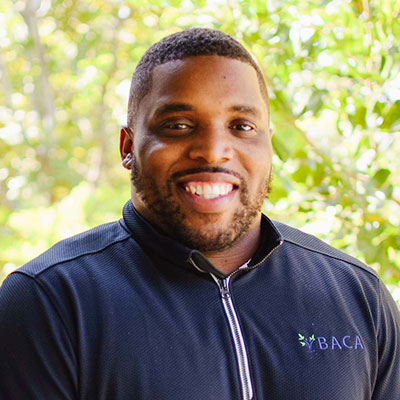“Don’t suffer alone!”
I say this so often, I should make tee shirts. During this year (and a half) so ugly it launched a thousand memes, the plea seems more important – and unrealistic – than ever. Group gatherings were banned, public spaces shut down, and Zoom “parties” lost their appeal. Schools went online, extracurriculars ended, and playdates became prohibitively complicated. For a few of my young adult patients, our weekly session was their only hour of human contact. I found myself cringing as I whistled my old tune. How did I expect people to come together for their mental health, if their physical health required them to stay away?
Well, we did what we could: we suffered together, apart.
Thrown into the deep end last March, my patients and I flailed for footing as we adjusted to the murky new pool of telehealth. Abruptly immersed, I noticed my boundaries softening with our shared fears and uncertainties. I saw pieces of myself pouring into sessions, politics and ethics dribbling into conversation and personal anecdotes splashing into moments of validation. My baby’s laugh and dog’s howl seeped around my home office door. My patients and I bathed in puddles of common experiences, joys and pain.
Maybe it was the shield of the computer screen that encouraged vulnerability. Or maybe it was just access to more of my patients’ “real” lives: the posters on a bedroom wall, the echoes of an off-screen argument, bare faces, toothpaste dribbles, pajamas. Whatever the reason(s), my patient-doctor relationships changed this past year in a way that feels permanent and profound.
California shut down during what was supposed to be the first week in our new Berkeley office. I’d hyped the updated digs for months, and in the days prior, I said a joking “goodbye” to my regular patients, teasing a few of them with an offhand, “and I’ll never see you (here) again!” I was preparing for maternity leave, so we were already processing transitions on multiple levels. Still, when shelter-in-place began days after we moved, I never doubted that I’d be back at my desk, meeting people face-to-face until my due date.

2020 had other plans.
More than a year later, I finally returned to the Berkeley office to re-pack my things. In the intervening months, I’d given birth, taken three months of leave, and moved to Texas. At the time, leaving the Bay Area was my only option for safe, affordable childcare. I was torn, knowing how hard these kinds of changes can be on patient relationships. I was scared of my patients’ anger, worried they’d feel abandoned or betrayed when they found out that I now lived in my hometown, Austin.
I shouldn’t have worried. My patients were (and continue to be) absolute rockstars. Though there are things I miss (board games, shared hot chocolates, therapy dance breaks), for most of my kids and adults, telehealth has allowed our therapeutic relationship to broaden and deepen. There are a million things that 2020 and 2021 brought that I’d gladly give back. The option for virtual sessions is not one of them.
While I remain woefully non-clairvoyant, I did start a telehealth initiative at BACA several months before COVID hit. The policies and documents we’d already prepared helped lay the groundwork for BACA’s quick transition in March 2020. Of the many barriers to care in mental health, geographical limitations have an inexpensive and immediately available solution, thanks to technology. Before COVID, I had patients who drove over an hour for a 30 minute session with me in horrible Bay Area traffic (which did nothing for their anxiety and depression – or the environment). We regularly evaluated patients who needed IOP but had no options in their area, or who had to go to heroic measures (such as moving in with relatives) in order to participate.
California has been at the forefront of telehealth. With the passage and revisions of the Telehealth Advancement Act, we have been able to ensure that patients can be seen and providers can be reimbursed for telehealth services at the same level as in person care. Though there are situations in which I still recommend finding a provider who can see people in the office, telehealth has been an effective and convenient option for most providers and patients.
A 2017 meta analysis showed improved outcomes (for example, better medication adherence), greater ease of use, and lower overall cost of switching to telehealth. Included studies also reported better access to care and more frequent communication with clinicians, all of which are central to BACA’s mission. More recently, the Telehealth Impact Study found high levels of satisfaction with telehealth during the pandemic, and our own Dr. Smita Thakkar noted a significant drop in no-shows and cancellations at BACA when comparing the years prior to and following the onset of the pandemic (March 2020).
Access to clinicians has temporarily expanded even further with emergency medical privileges, allowing us to see patients in some states where we are not licensed in certain circumstances. I deeply hope that those cross-border allowances will continue post-pandemic. I’ve seen firsthand the harm that forced transitions in care can do to patients, particularly in mental health. Our patients still need support on vacation, when they go to college, or if they move out of state, and now that telehealth is gaining traction as a preferred and insured form of treatment, the concept of a “local, accessible provider” is getting blurrier.
It makes no sense to me that medical licenses are state-based when all of our licensing exams and board requirements are nationally regulated. Though there are local laws and ordinances that vary state-to-state, most licensing bodies do not require applicants’ knowledge of these. If we can work together to share local resources and knowledge through provider networks and consultation, we can safely and effectively manage longer distance care and collaboration.
Don’t get me wrong, I do miss seeing my patients in real life, and I can’t wait until it’s safe enough to make regular trips back to that Berkeley office to share fruit snacks and school them at Uno. In the meantime, though, I’m enjoying the closeness and convenience that telehealth has brought to my practice. Until we can suffer together, together again, we’ll keep supporting each other together, apart.


